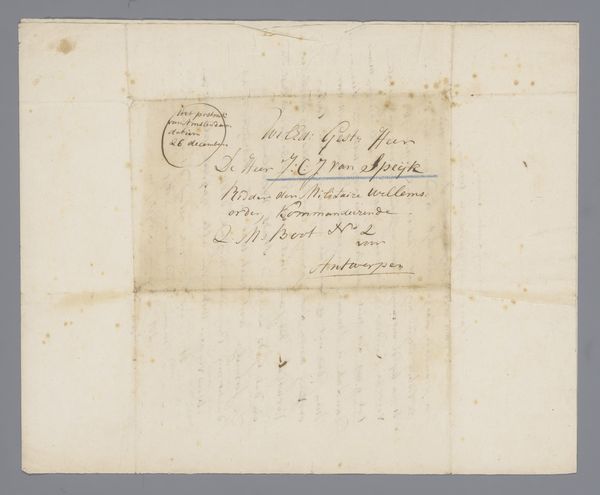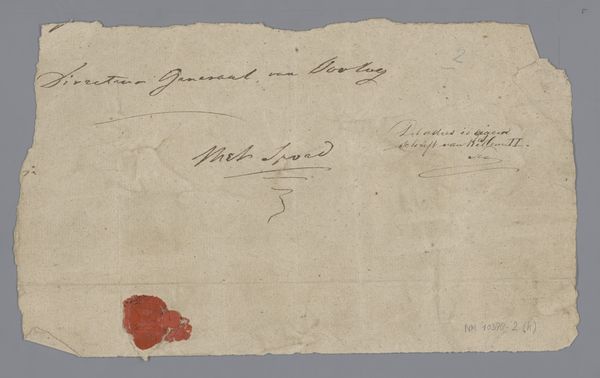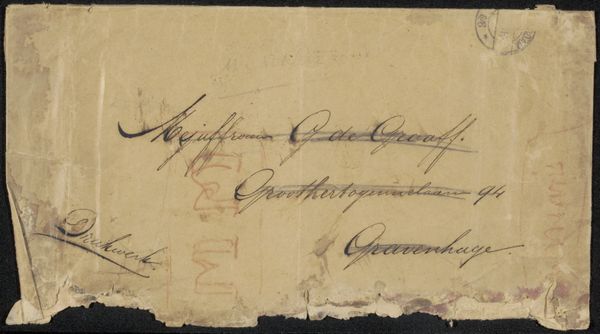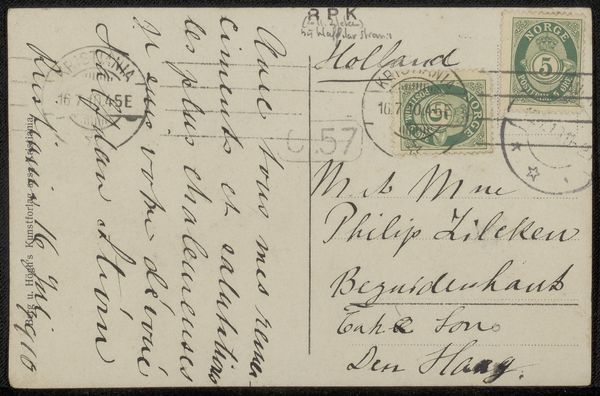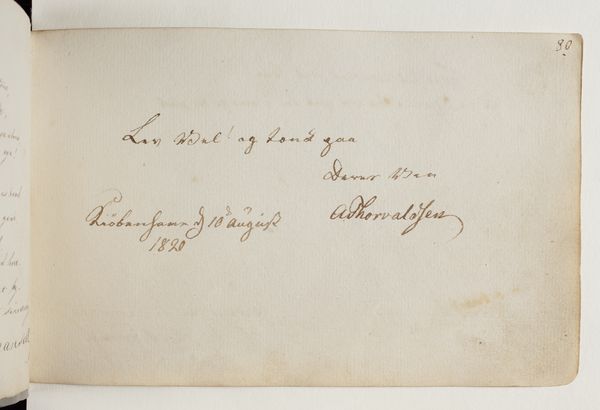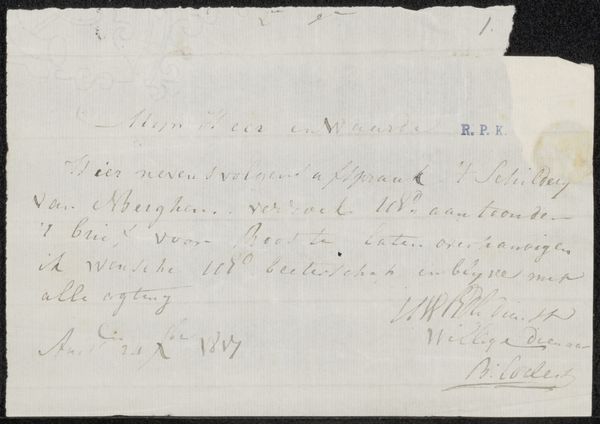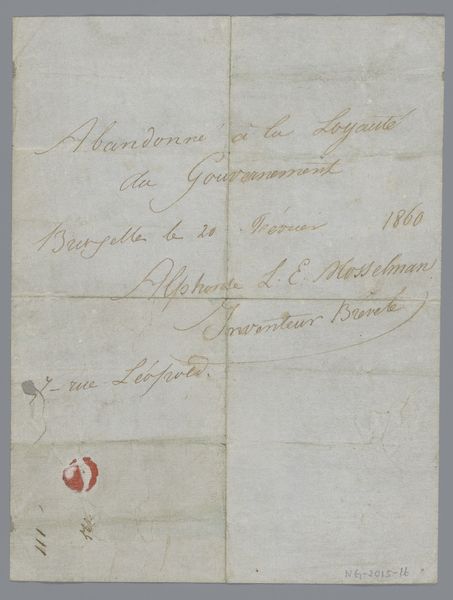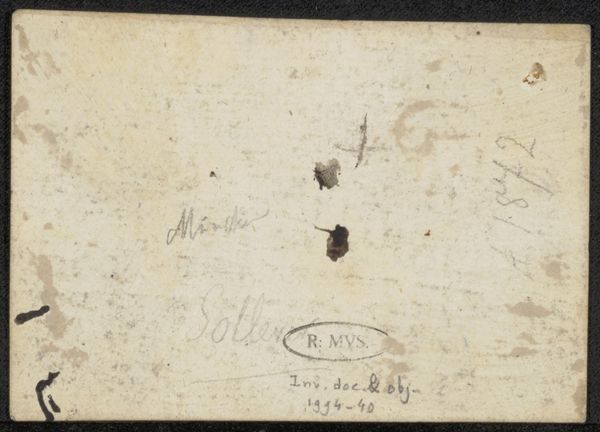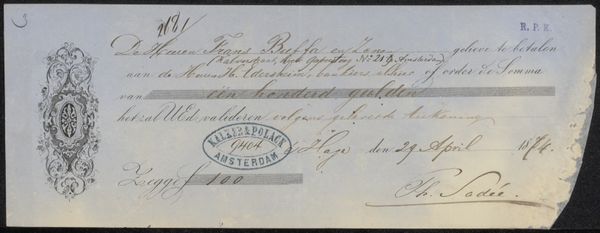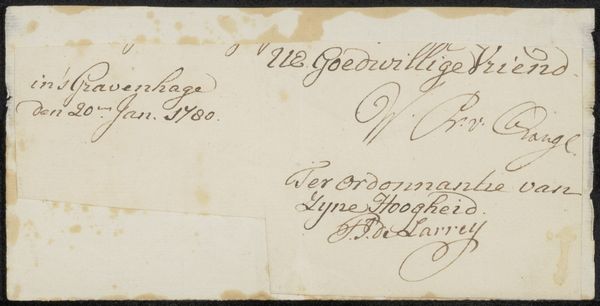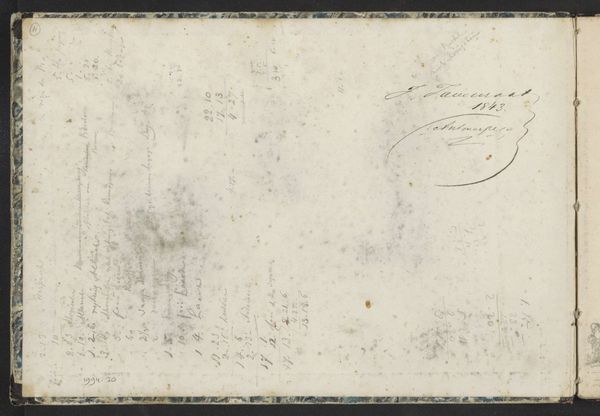![[Brief] by Fritz Bamberger](/_next/image?url=https%3A%2F%2Fd2w8kbdekdi1gv.cloudfront.net%2FeyJidWNrZXQiOiAiYXJ0ZXJhLWltYWdlcy1idWNrZXQiLCAia2V5IjogImFydHdvcmtzL2FhYmNjN2I1LTg4MTYtNGE5OC04ZjM5LTExMDM3NjRkNjMyZS9hYWJjYzdiNS04ODE2LTRhOTgtOGYzOS0xMTAzNzY0ZDYzMmVfZnVsbC5qcGciLCAiZWRpdHMiOiB7InJlc2l6ZSI6IHsid2lkdGgiOiAxOTIwLCAiaGVpZ2h0IjogMTkyMCwgImZpdCI6ICJpbnNpZGUifX19&w=3840&q=75)
Copyright: Public Domain
Curator: Looking at this historical document evokes a sense of intimacy; it’s as if we’re intruding on a private moment from nearly two centuries ago. This "Brief," or letter, dates from 1832 and comes from the hand of Fritz Bamberger. It is an ink drawing on paper, a small but potent artifact now held in the Städel Museum's collection. Editor: It strikes me as fragile and faded. The sepia tones of the ink and paper contribute to this sense of delicate impermanence, which actually heightens its emotional resonance. The neat calligraphic script dances across the page. Curator: Precisely. Letters such as these played a crucial role in maintaining social bonds and enabling bureaucratic functions. They highlight how people communicated and structured their lives around the postal service, especially given Bamberger’s affiliation with Romanticism, which greatly emphasized personal expression. Editor: See the carefully placed seal? Its circular form interrupts the linear text, offering a contrasting shape that grounds the composition and provides a splash of color—though time has dulled its original vibrancy. Note also the visual hierarchy created by variations in font size. Curator: Indeed. It is postmarked in Munich. This object isn’t just a letter, but also represents a network of individuals, institutions, and political structures, which enabled correspondence and defined 19th-century German society. Preserving and exhibiting such seemingly modest documents democratizes and enriches public access to cultural heritage. Editor: Absolutely. Through an exercise in close looking, this unassuming letter is more than just words on paper, or in digital reproductions of artworks. Curator: Right. What appears insignificant upon casual assessment reveals layered and crucial social, and material components. It tells an entire historical chapter through personal archives. Editor: In this brief, in this "Brief", we get a snapshot of not just the letter's content, but the cultural frameworks of 19th century exchange and its art and social history.
Comments
No comments
Be the first to comment and join the conversation on the ultimate creative platform.
